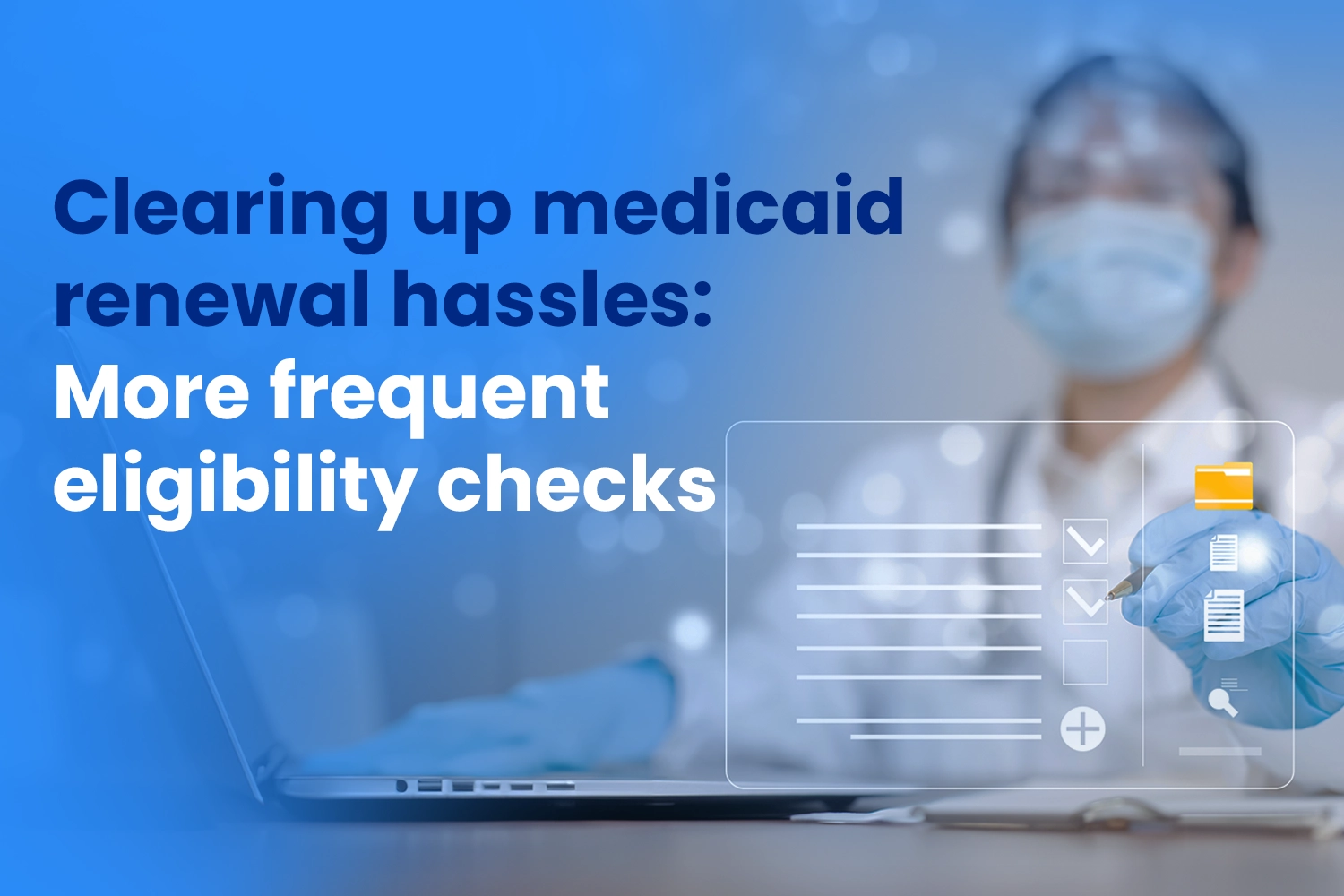
Clearing Up Medicaid Renewal Hassles: More Frequent Eligibility Checks
Morning at the Clinic: The Unseen Frustration
Picture Rosa, the front-desk coordinator at a busy community clinic. Mondays used to bring her a stack of red-lettered Medicaid notification letters, patients who were insured one day and suddenly dropped the next. Sometimes it’s a missing signature. Sometimes it’s a renewal that didn’t go through. These inconsistencies cause delays in care, frustration for patients, and headaches across the billing team.
More Frequent Checks: Regulation or Roadblock?
By mid-2025, healthcare regulators are eyeing a significant shift: more frequent medicaid eligibility checks for expansion enrollees, possibly moving from annual to biannual reviews, especially under proposals like the “One Big Beautiful Bill”. That means nearly 20 million enrollees may face eligibility reviews twice a year instead of once.
On the surface, this appears prudent, but for providers, it can translate into administrative overload, patient coverage gaps, and RCM inefficiencies.
The Human Cost: Coverage Disruptions and Office Anxiety
A sobering study from the Urban Institute found that more frequent redeterminations could increase medicaid churn, coverage gaps followed by reenrollment within the same year, which disrupts access to care, adds paperwork, and inflates processing costs for clinics, insurers, and agencies alike.
Rosa’s clinic has seen this firsthand: patients drop off mid-care, then reapply. Meanwhile, the billing team scrambles to score coverage retroactively—sometimes succeeding, leaving the patient with unexpected bills.
The System Is Meant to Be Annual—And It’s for a Reason
Federal law mandates that Medicaid eligibility determinations occur once every 12 months—and no more frequently than that, for most beneficiaries, except specific groups like QMBs, who may require redetermination every six months.
This cadence allows for predictable workflows, manageable documentation timelines, and smoother RCM operations.
Lapiz Digital to the Rescue: Automating the Burden Away
Here’s where Lapiz Digital steps in—transforming chaos into reliability through:
- Proactive Data Syncing: Leveraging ex parte renewal processes by validating eligibility using data sources like SNAP, income records, and system flags.
- Automated Alerts: When renewal forms are due or deadlines loom, Lapiz’s systems notify teams and patients, minimizing drop-offs and late renewals.
- Claim Assurance Workflows: If a patient’s eligibility lapses, Lapiz workflows flag it and route billing staff to initiate timely appeals or submit retroactive coverage requests.
- Strategic Outreach Support: By engaging community partners and accessible touchpoints—texts, emails, portals, Lapiz helps beneficiaries stay connected and compliant.
A Patient Story: From Frustration to Continuity
Take Juan, a diabetic patient. After a renewal miss, his insulin shipments halted. Rosa’s team reached out proactively, Lapiz flagged the issue, produced the renewal form, submitted it electronically, and processed the claim, all within a few days. Coverage resumed with only one day of missed service, and the patient, relieved and connected, feels seen and secure again.
Tips for Providers Facing Increased Checks
- Understand Policy Timelines: States must resume standard annual renewals by January 2026; use the transition period wisely.
- Build Automated Workflows: Leverage ex parte renewals where possible and automate outreach to minimize lapses.
- Train Staff Smartly: Ensure billing, care coordinators, and front desk teams understand renewal timelines and procedural workflows, making them proactive guardians of coverage.
- Use Strategic Partnerships: Align with trusted partners like Lapiz Digital to scale automation, compliance, and patient communication seamlessly.
The RCM Ripple Effect of Smarter Medicaid Renewals
By streamlining eligibility checks:
- Patients are covered for longer periods, which reduces interruptions in care.
- Financial stability increases, with fewer rejections and retroactive claims.
- Administrative load is reduced, allowing staff to focus on patient engagement and strategic duties.
- Visibility into revenue flow improves, with fewer surprises and more predictable reimbursements.
Final Thought: Build a Resilient Renewal System Now
If more frequent Medicaid eligibility checks materialize, healthcare providers will face a new operational challenge. But RCM doesn’t have to break, or patients lose coverage. You can assure coverage continuity, billing accuracy, and patient trust now and in the future by using intelligent automation, empathic workflow design, and partners such as Lapiz Digital.
Service Overview (Lapiz Digital Healthcare Services)
Lapiz Digital offers a holistic suite of revenue cycle management (RCM) services tailored to healthcare’s unique demands. Their offering includes Medical Billing, Medical Coding, A/R Recovery, Denial Management, and Payment Posting, fueled by precision in ICD-10/CPT coding and vast processing power, spanning 10–20 million clean claims processed, $100–300 million in client revenue generated. With deep domain expertise and operational rigor, Lapiz empowers healthcare organizations to optimize cash flows, enhance compliance, and navigate regulatory complexity with confidence.